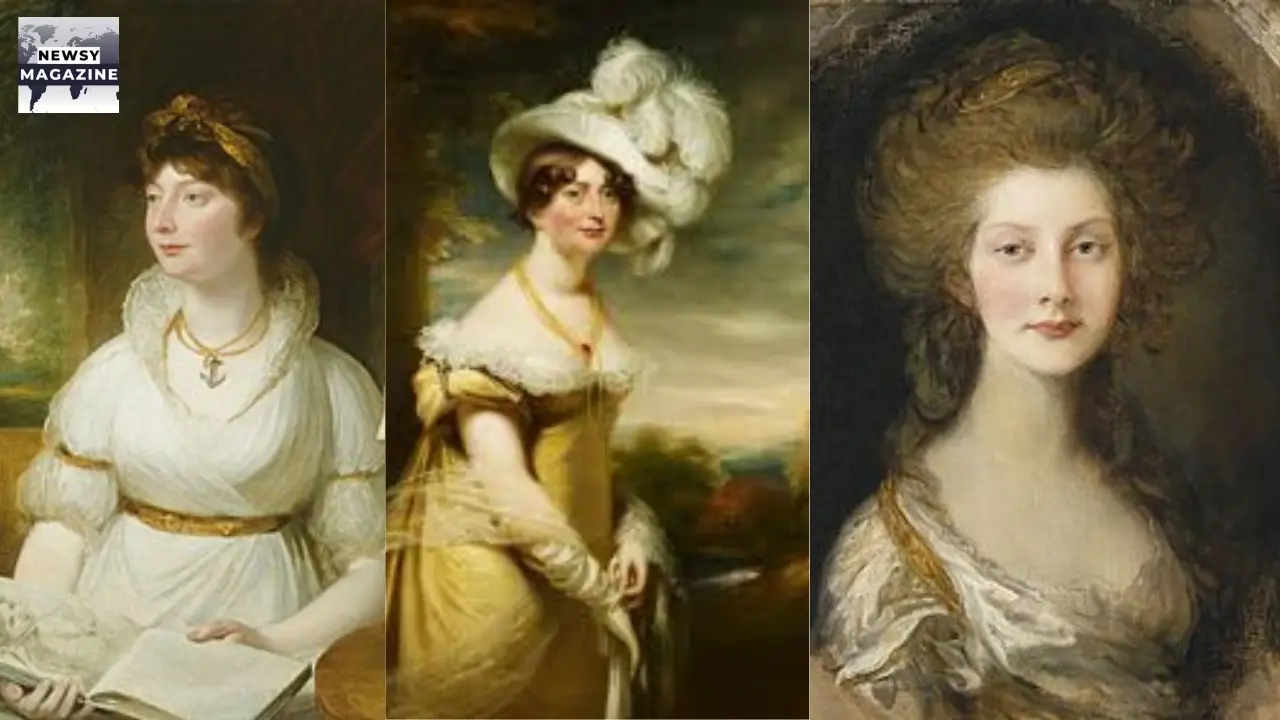
Catherine the Great, the Empress of Russia from 1762 to 1796, left an indelible mark on history not just through her political prowess but also through her patronage of the arts. Her reign, often regarded as a golden age, was marked by substantial advancements in culture, architecture, and education. Among her many passions was her exquisite taste in furniture, which she used to reflect her sophisticated aesthetic and the grandeur of her era.
Imagine stepping into a room filled with opulent furniture, each piece a testament to craftsmanship and luxury. This was the world Catherine the Great created within her palaces. Her collection of furniture wasn’t just about decor; it was a statement of power, culture, and refinement. These pieces, characterized by intricate designs and the finest materials, continue to captivate and inspire even today.
This article delves into the fascinating world of Catherine the Great’s furniture. We will explore its historical context, distinctive characteristics, popular types, and enduring legacy. By the end, you will gain a comprehensive understanding of how Catherine’s taste in furniture not only reflected her style but also influenced European design trends and left a lasting legacy in the world of interior design.
The Historical Context of Catherine the Great’s Reign
Catherine the Great was born in Stettin, Prussia, in 1729 and originally named Sophia Augusta Fredericka. Her ascent to power began with her marriage to Peter III of Russia, whom she later deposed in a coup to become the Empress of Russia. Her reign, lasting until she died in 1796, was marked by extensive reforms aimed at modernizing Russia and expanding its borders. Catherine was a staunch advocate of the Enlightenment, engaging with prominent thinkers like Voltaire and Diderot, whose ideas influenced her policies and cultural initiatives.

Her political and cultural endeavors were intertwined with her interests, particularly her passion for art and architecture. Catherine’s reign saw the establishment of the Hermitage Museum in St. Petersburg, which began as a personal collection of art and artifacts. This museum not only showcased her vast collection but also served as a cultural hub that reflected her dedication to the arts. Her influence extended beyond politics, shaping the cultural landscape of Russia in profound ways.
Influence on Furniture Design
Catherine the Great had a significant influence on furniture design, promoting styles that reflected her taste for luxury and elegance. She was particularly enamored with the neoclassical style, which drew inspiration from ancient Greek and Roman art and architecture. This style was characterized by clean lines, geometric shapes, and motifs that evoked classical antiquity. Catherine’s commissions often featured intricate carvings, gilding, and the use of luxurious materials such as mahogany, silk, and marble. Her support for neoclassical design helped popularize the style across Europe, impacting renowned furniture makers like Thomas Sheraton and George Hepplewhite.
In addition to neoclassical designs, Catherine also embraced Rococo elements, known for their ornate decorations and elegant curves. These pieces often featured playful themes and asymmetrical designs, reflecting the whimsical aspects of Catherine’s taste. By blending these styles, Catherine’s furniture became a unique representation of her era’s artistic trends, combining grandeur with refined elegance. Her influence on furniture design extended beyond her reign, leaving a lasting legacy in the world of interior decor.
Characteristics of Catherine the Great’s Furniture
Catherine the Great’s furniture is renowned for its opulence and grandeur. Influenced by the Rococo and Neoclassical styles popular during her reign, these pieces often featured elaborate designs, intricate carvings, and gilded accents. Common materials included high-quality woods such as mahogany, walnut, and rosewood, as well as luxurious textiles like silk and velvet. The scale of the furniture was typically large, befitting the expansive rooms of her palaces. These characteristics not only showcased the technical skills of the artisans but also reflected Catherine’s commitment to promoting the arts and craftsmanship in Russia.
The use of luxurious materials was a hallmark of Catherine’s furniture. Gilded wood, marble, and silk were commonly used, creating a sense of opulence and elegance. Intricate carvings often depicted classical motifs, such as laurel wreaths, acanthus leaves, and mythological figures, underscoring the neoclassical influence. These designs were not just decorative; they conveyed a sense of power and sophistication, aligning with Catherine’s vision of a modernized and cultured Russia. The grandeur and elegance of her furniture continue to be admired by collectors and enthusiasts around the world.
Popular Types of Furniture
- Rococo Furniture: This style was characterized by ornate decorations, intricate carvings, and elegant curves. Rococo pieces often featured playful themes and asymmetrical designs, reflecting the whimsical aspects of Catherine’s taste. These pieces were typically adorned with gilded details and luxurious fabrics, such as silk and velvet, adding to their opulent appearance. Rococo furniture was particularly favored in Catherine’s private chambers, where its light-hearted elegance created an intimate and luxurious atmosphere.
- Neoclassical Furniture: Drawing inspiration from ancient Greece and Rome, neoclassical furniture featured clean lines, geometric shapes, and classical motifs. This style was marked by its simplicity and elegance, contrasting with the more elaborate Rococo style. Neoclassical pieces often incorporated elements such as fluted columns, laurel wreaths, and mythological figures, emphasizing the classical heritage that Catherine admired. The use of high-quality materials, such as mahogany and marble, further enhanced the sophisticated appearance of these pieces, making them a centerpiece in Catherine’s grand reception rooms and public spaces.
Notable Pieces and Collections
Catherine the Great’s collection included a vast array of furniture, each piece showcasing her refined taste and appreciation for craftsmanship. Among the notable pieces were gilded chairs and sofas, often adorned with intricate carvings and luxurious fabrics. These pieces were designed to impress and were commonly used in her palaces’ grand halls. Marble-topped tables were another favorite, featuring elaborate bases and serving both functional and decorative purposes. Decorative cabinets, with their intricate inlays and gilded details, were also prominent in her collection, highlighting the skill of the artisans and the opulence of Catherine’s court.
One of the most famous collections is housed in the Hermitage Museum in St. Petersburg, which Catherine founded. The museum contains numerous pieces from her collection, including furniture, paintings, and decorative arts, providing a glimpse into the luxurious lifestyle of her court. The intricate designs and luxurious materials used in these pieces continue to captivate and inspire, making Catherine the Great’s furniture a lasting symbol of opulence and artistic mastery. Visitors to the Hermitage can marvel at the grandeur and elegance of these pieces, appreciating the legacy of one of history’s most influential patrons of the arts.
Legacy and Influence
Catherine the Great’s impact on furniture design extends beyond her reign. Her promotion of neoclassical and Rococo styles influenced European furniture makers and left a lasting legacy in the world of interior design. Today, her pieces are highly sought after by collectors and continue to inspire contemporary designers. The elegance and sophistication of Catherine’s furniture remain a benchmark for luxury and craftsmanship, reflecting her enduring influence on the arts. Her legacy in furniture design is celebrated not only in museums but also in the continued appreciation and emulation of her exquisite taste in modern interior decor.
The enduring appeal of Catherine’s furniture lies in its combination of artistic excellence and historical significance. These pieces are not only beautiful but also serve as a testament to the cultural and artistic achievements of her reign. The intricate designs, luxurious materials, and grand scale of her furniture continue to captivate audiences, making Catherine the Great’s furniture a lasting symbol of opulence and artistic mastery. Collectors and enthusiasts worldwide seek to preserve and celebrate this legacy, ensuring that Catherine’s influence on furniture design remains a significant part of cultural history.
Read Also: The Tragic Case of Chad Doerman: Comprehensive Coverage and Insights
Conclusion
Catherine the Great’s furniture is a testament to her sophisticated taste and the cultural richness of her reign. The opulent and intricately designed pieces not only reflect her style but also her commitment to promoting the arts and craftsmanship in Russia. Her legacy in furniture design remains influential, underscoring the enduring allure of her luxurious and elegant aesthetic. For those interested in exploring the grandeur of Catherine the Great’s furniture, visiting the Hermitage Museum offers a unique opportunity to experience these masterpieces firsthand. The intricate designs and luxurious materials used in these pieces continue to captivate and inspire, making Catherine the Great’s furniture a lasting symbol of opulence and artistic mastery.
FAQs
1. What styles of furniture were most popular during Catherine the Great’s reign?
The most popular styles during Catherine the Great’s reign were Rococo and Neoclassical. Rococo is known for its ornate decorations and elegant curves, while Neoclassical features clean lines and classical motifs inspired by ancient Greek and Roman art.
2. What materials were commonly used in Catherine the Great’s furniture?
Catherine the Great’s furniture often featured high-quality woods like mahogany, walnut, and rosewood, along with luxurious textiles such as silk and velvet. Gilded wood and marble were also commonly used to enhance the opulent appearance of the pieces.
3. Where can one see the furniture from Catherine the Great’s collection today?
Many pieces from Catherine the Great’s collection are housed in the Hermitage Museum in St. Petersburg, Russia. The museum, founded by Catherine herself, showcases her exquisite taste in furniture along with other art and artifacts from her reign.
4. How did Catherine the Great’s taste in furniture influence European design trends?
Catherine’s promotion of Neoclassical and Rococo styles significantly influenced European furniture design. Renowned furniture makers such as Thomas Sheraton and George Hepplewhite incorporated similar elements into their designs, reflecting her impact on interior decor trends across Europe.
5. What are some notable pieces of furniture from Catherine the Great’s collection?
Notable pieces from Catherine the Great’s collection include gilded chairs and sofas with intricate carvings, marble-topped tables, and decorative cabinets with inlays and gilded details. These pieces are highly valued for their craftsmanship and opulent designs.





